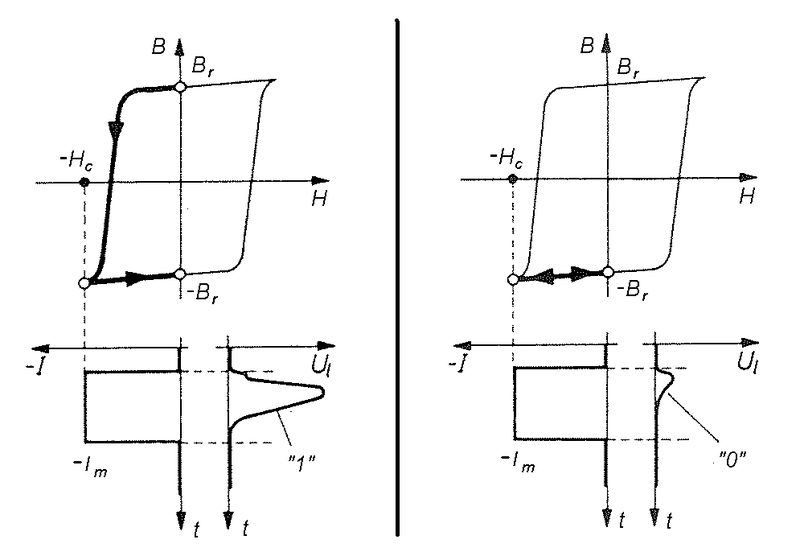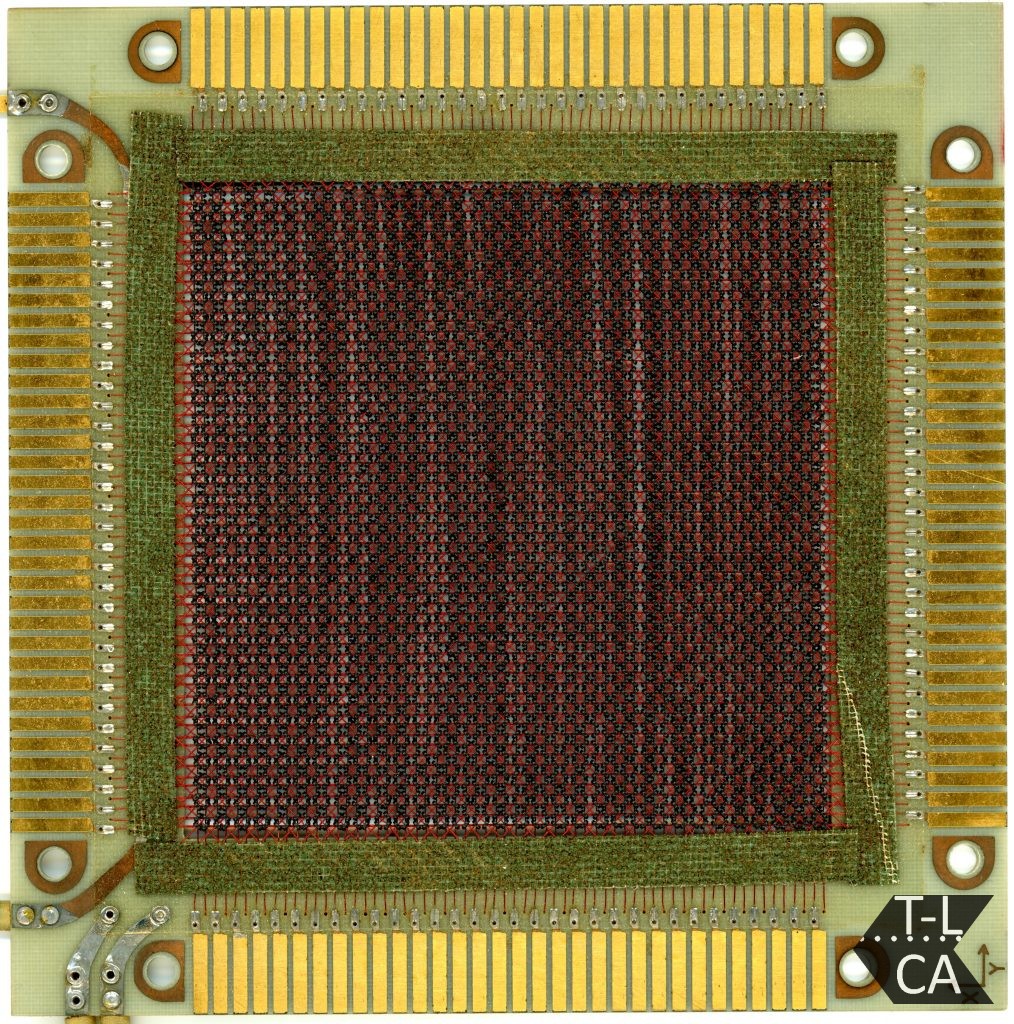Core memory was one of the first Random Access Memory technologies used. That is, you can access any word (byte) or even any bit in some cases at random without the need to read the whole memory or page of memory.
Core memory uses toroidal ferrous metal rings, capable of holding a magnetic field within the ring. Two wirex, X and Y, run through the ring perpendicular to each other. A 3rd “sense/inhibit” wire runs at 45 degrees through the ring.
Writing to the memory: By use of the Magnetic Hysteresis effect, the core can be magnetised by passing a specific current through the appropriate X and Y wires to select the core. This will lock in the magnetic field due to the current being above the hysteresis threshold, causing the core to magnetise either Clockwise (e.g. 1) or Anticlockwise (e.g. 0), leaving the other cores unaffected.
Reading the memory: In order to read the magnetic field, the system has to write to it again. The system attempts to write a “0” state to the core. Should the core already be at “0” then there is no change. Should the core have been a “1” then the core would have changed, and on such a change the “sense” wire will have a voltage induced into it. This is detected and the system will recognise the memory as a “1”. This of course destroys the memory, and so the memory must be re-written back to its previous state if it is needed to be kept.
As systems became more advanced and more dense, the torroidal cores became so small they had to be sewn together by a machine. The memory controllers also became more advances, allowing for a read-process-write cycle to speed up a memory read: If the CPU knew the value would be processed before it was written back, the autmoatic re-write cycle could be inhibited briefly, speeding up calculations.
Core memory has many advantages over most other types
- Non-volatile. That is it keeps the data on power down.
- Per-bit Random Access. Any single bit can be read at any time.
- Robust. Dispite fragile wires and cores, a ROM version of core memory has been known to survive in an exploded spacecraft, data still intact.
- Easy to construct. Its really just wires and metal rings.
- Well understood and reliable technology. The magnetic hysteresis effect is constant and stable, unlike semiconductors from the 1960’s.

Magnetic Hysteresis effect. Photo from Wikipedia.
This image is from a core memory in the Museums collection. You can see a VERY LARGE (8Mb) version of it here.

2kByes (16,384 bits) of Core Memory
0 Comments